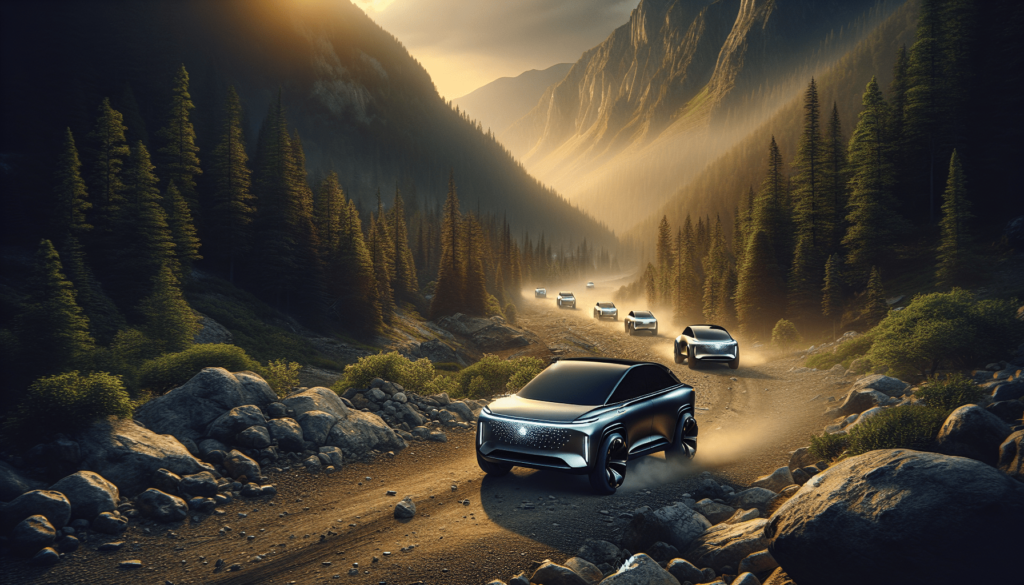What if you could travel the world in a convoy of autonomous vehicles, experiencing the freedom of the open road without the challenges of manual driving? The concept of overlanding in autonomous vehicle convoys is both exciting and innovative. However, to ensure a safe, enjoyable, and efficient journey, it’s important to adhere to some best practices.
Understanding Autonomous Vehicle Technology
To appreciate the intricacies of overlanding in autonomous vehicle convoys, you first need to understand the technology behind these vehicles.
What are Autonomous Vehicles?
Autonomous vehicles, often referred to as self-driving cars, use a combination of sensors, cameras, and artificial intelligence to navigate without human intervention. These vehicles can identify objects, evaluate driving conditions, and make real-time decisions.
Levels of Automation
The Society of Automotive Engineers (SAE) defines levels of vehicle automation, ranging from Level 0 (no automation) to Level 5 (full automation). For overlanding purposes, you’re likely to see vehicles at Level 4 or 5, capable of handling all driving tasks in most environments.
| Level | Description |
|---|---|
| 0 | No automation |
| 1 | Driver assistance |
| 2 | Partial automation |
| 3 | Conditional automation |
| 4 | High automation |
| 5 | Full automation |
Preparing for the Convoy
Before hitting the road, preparation plays a vital role. Here are steps you should take:
Vehicle Selection
Choose vehicles that are suitable for overlanding and equipped with advanced autonomous features. Look for those with off-road capabilities, robust navigation systems, and extensive range.
Route Planning
Utilizing mapping software is essential for devising your travel route. Successful overlanding requires attention to diverse elements such as terrain, weather conditions, and available resources like fuel and shelter.
Tips for Planning Your Route:
- Identify intersections for convoy communication.
- Determine rest stops and fuel points.
- Utilize maps that show off-road trails and campgrounds.
Communication and Coordination
A solid communication strategy is key for successful convoy travel. Ensure each vehicle in the convoy has reliable communication systems, whether through two-way radios, cell phones, or custom applications designed for convoy coordination.

Establishing Convoy Protocols
Effective convoy protocols help maintain safety and efficiency. Here are some essential practices to establish:
Speed Management
Maintain a steady convoy speed. Autonomous vehicles respond to conditions, but keeping a consistent pace ensures safety and comfort for all participants.
Formation and Spacing
Setting a proper formation within your convoy enhances visibility and safety. Here’s a suggestion for spacing:
| Vehicle Position | Purpose |
|---|---|
| Lead Vehicle | Sets pace and navigational direction |
| Middle Vehicles | Follow and maintain spacing |
| Rear Vehicle | Monitors the convoy for any issues |
Driver Engagement
In highly automated vehicles, drivers are often briefed on performing manual controls if needed. Brief everyone on maintaining focus and being prepared to take over if automation fails.
Technical Considerations
When overlanding, consider the technical aspects of autonomous vehicle functionality.
Sensor Calibration
Ensure all sensors are calibrated before setting out on your journey. This includes cameras, LIDAR, and radar systems, which effectively gather data and ensure the vehicle can navigate conditions accurately.
Software Updates
Stay updated on the latest software for your autonomous vehicles. Regular updates can enhance navigation features, improve safety protocols, and provide better routes.

Navigating Diverse Terrains
Overlanding typically involves traversing various terrains. Each terrain presents unique challenges and considerations.
Off-Road Navigation
Autonomous vehicles may excel in urban environments, but off-road scenarios can pose challenges. Ensure your vehicle is equipped with off-road capabilities and has sufficient ground clearance.
Adapting to Weather Conditions
Weather can drastically affect overlanding experiences. Here are some considerations for different weather scenarios:
| Weather Condition | Considerations |
|---|---|
| Rain | Ensure vehicles have proper traction systems. |
| Snow | Equip vehicles with snow-specific tires. |
| Mud | Know when to avoid mud-laden trails. |
| Fog | Maintain slower speeds, as visibility is limited. |
Handling Emergencies
Even with advanced technology, emergencies can happen. Establish a protocol for addressing breakdowns, equipment failure, or adverse weather situations.
Ensuring Safety Standards
Safety is paramount when traveling in autonomous vehicle convoys. Here are some best practices:
First Aid Kit and Emergency Supplies
Always carry a well-stocked first aid kit and additional emergency supplies. You never know when you may encounter an unexpected situation.
Vehicle Maintenance Checks
Before departure and at intervals during your trip, perform routine maintenance checks. Regular inspections will help ensure that all systems, such as brakes and steering, are functioning correctly.
Emergency Contacts
Have an emergency contact list accessible in each vehicle, including local emergency services and personnel familiar with your travel area.
Enhancing the Experience
To make your overlanding journey enjoyable, consider incorporating additional activities and amenities.
Entertainment Systems
Having a shared playlist or entertainment system can enhance your experience. Use tech platforms that allow for streaming music and content across vehicles.
Meals and Camping
Group meals can strengthen camaraderie among convoy members. Plan for communal cooking or designated meal stops along the journey. Also, make sure camping gear is compatible and easy to set up.
Documenting the Journey
Encourage convoy members to document the trip through photos and videos. These memories will be cherished for years to come, and sharing experiences can inspire others to embark on similar adventures.
Evaluating Your Trip Post-Adventure
After your journey, take time to reflect and evaluate the experience. Here are points to consider:
Gathering Feedback
Ask each convoy member for feedback on the trip. Discuss what worked well, what could be improved, and formalize these insights for future adventures.
Sharing Knowledge
Consider sharing your journey through blogs, vlogs, or social media. This will not only help you relive the experience but also guide fellow enthusiasts interested in overlanding with autonomous vehicle convoys.
Conclusion
Overlanding in autonomous vehicle convoys merges technology with adventure, presenting an exciting future for travel enthusiasts. By adhering to best practices, you can ensure a safe and fulfilling experience on the open road. Preparation, communication, safety protocols, and planning for diverse terrains play a crucial role in crafting memorable journeys. With the right approach, you’ll not only enjoy the freedom of autonomous travel but also create lasting memories with fellow adventurers. Every trip is an opportunity for growth and discovery, so gear up for the voyage ahead—your adventure awaits!

